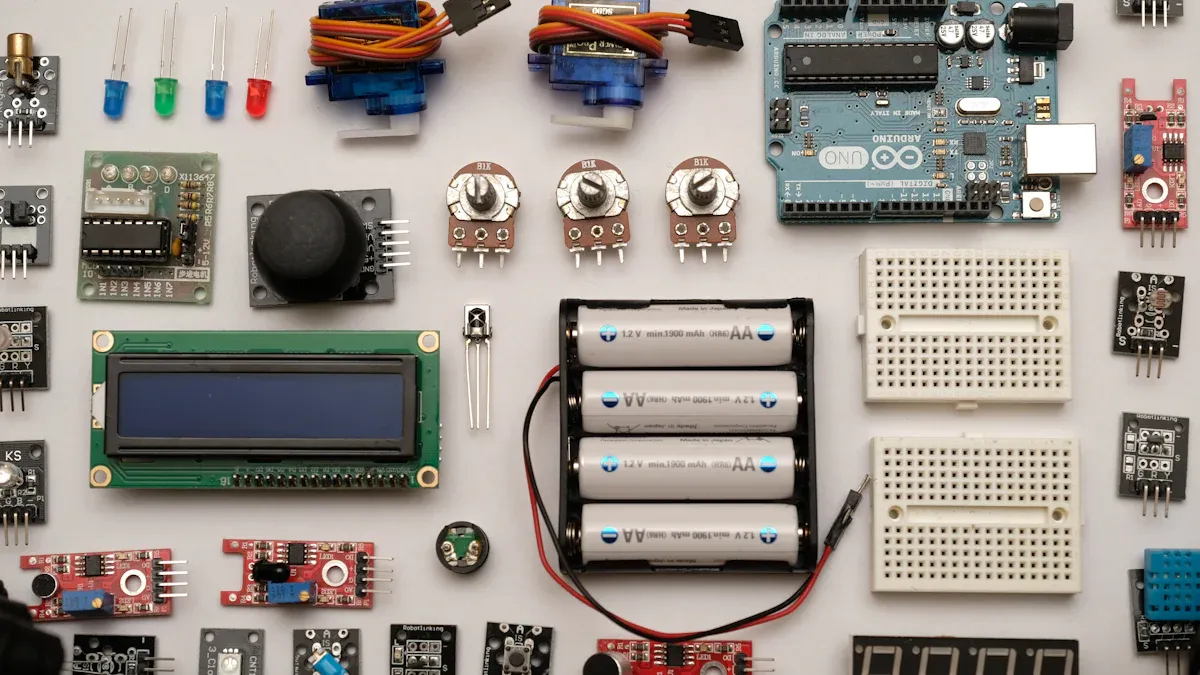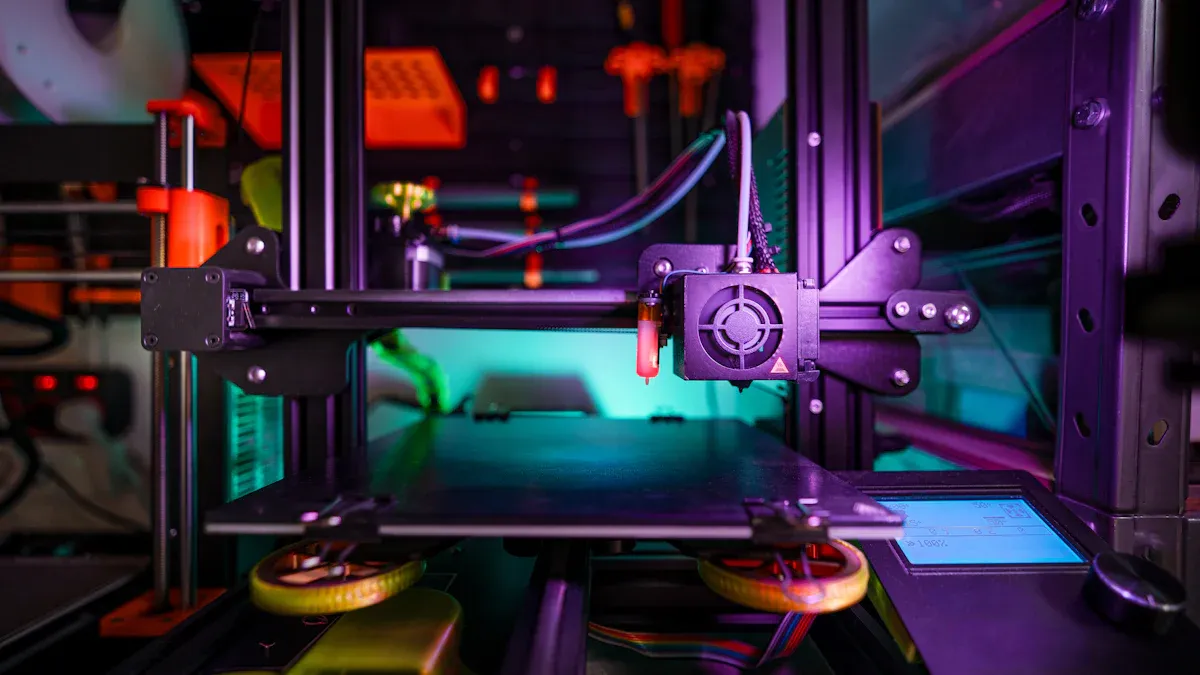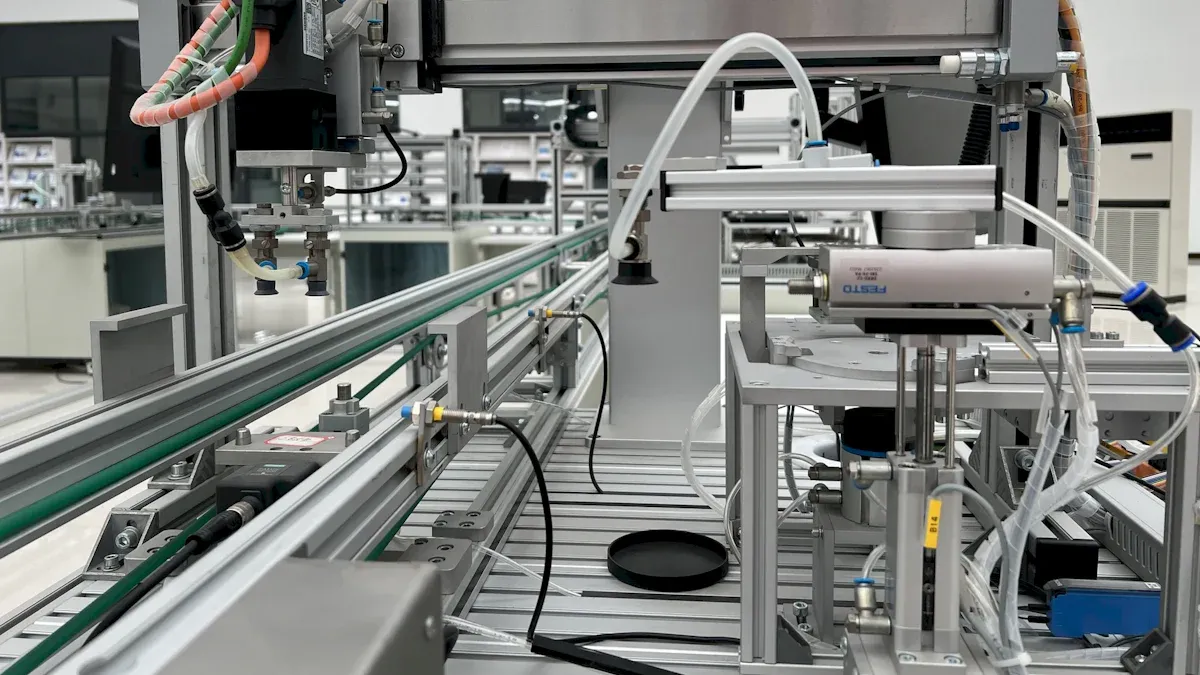
Industry 4.0 marks a new era in manufacturing, where advanced technologies like IoT reshape processes. In plastic injection molding, IoT enables machines to communicate, share data, and optimize operations. This shift is crucial as industries aim to stay competitive. For instance, the injection molding software market is projected to hit $542.19 million by 2025, reflecting rapid adoption of digital transformation.

Real-time monitoring plays a pivotal role in transforming plastic injection molding into a smart manufacturing process. By integrating IoT devices, you can track machine performance, production cycles, and operational parameters instantly. This connectivity ensures that you receive alerts about potential issues before they escalate. For example, Windmill Plastics implemented a digital supervisor system to automate manual tasks and improve production oversight. Similarly, systems like FactoryOps notify personnel about machine stoppages, enabling faster response times and reducing downtime.
Real-time monitoring also enhances communication across production lines. When machines and systems share data seamlessly, you gain better visibility into operations. Experts highlight that manufacturers who actively monitor their processes can address quality issues immediately, unlike those who rely on post-production checks. This proactive approach minimizes waste and ensures consistent product quality.
| Study Title | Findings |
|---|---|
| A Hybrid Architectural Model for Monitoring Production Performance in the Plastic Injection Molding Process | IoT integration optimizes machine usage and enhances OEE by facilitating timely maintenance and monitoring production performance. |
| Implementation of Internet of Things (IoT) in a Plastic Blow Moulding Machine and Its Performance Measurement | The implementation of IoT in blow molding machines improves efficiency by reducing cycle time and maintaining product quality through automation. |
Predictive maintenance leverages IoT and big data analytics to keep your machines running smoothly. By continuously monitoring equipment health, you can predict failures before they occur. This reduces unplanned downtime and extends the lifespan of your machinery. For instance, real-time data monitoring detects anomalies instantly, allowing timely interventions. Advanced analytics further enhances maintenance planning by creating predictive models based on machine data.
| Evidence Type | Description |
|---|---|
| Real-time Data Monitoring | Enables immediate detection of anomalies, leading to timely interventions and reduced downtime. |
| Condition Monitoring | Continuous assessment of equipment health helps predict failures before they occur. |
| Advanced Analytics | Utilizes machine data to create predictive models that enhance maintenance planning and efficiency. |
Predictive algorithms also play a significant role in minimizing downtime. Studies show that methods like K-means and Markov models analyze streaming data in real time, identifying patterns that signal potential issues. By adopting these techniques, you can ensure your production lines operate without interruptions.
| Study | Predictive Algorithm | Description |
|---|---|---|
| Jankov et al. (2017) | K-means and Markov models | Utilizes anomaly detection on streaming data, training models as data is processed in real-time. |
| Park et al. (2016) | Statistical analysis | Monitors operational parameters to identify significant patterns and detect abnormal behavior. |
| Ensemble methods | Various algorithms | Combines different training methods to enhance predictive performance and adapt to new data. |
Data analytics empowers you to achieve inline quality control in injection molding. By collecting and analyzing data throughout the production process, you can make informed adjustments to improve product quality. Companies like Kaysun and TechNH demonstrate the effectiveness of this approach. Kaysun uses scientific molding methods to optimize processes during initial production phases, while TechNH applies Process Failure Mode and Effects Analysis (PFMEA) to reduce variability and defects.
Quantitative improvements in product quality further validate the importance of data-driven methods. For example, analyzing thermal properties and moisture content ensures that materials meet high standards. This level of precision not only enhances product consistency but also reduces waste, aligning with the goals of industry 4.0.
| Improvement Aspect | Description |
|---|---|
| Purity | High-performance TA instruments provide precise quantitative information on material purity. |
| Thermal Properties | Analysis of glass transition, melting point, and thermal stability contributes to quality assurance. |
| Crystallinity Measurement | DSC curves help identify materials and assess cooling effects, optimizing the injection molding process. |
| Moisture Content | Rapid determination of moisture content aids in quality assurance of received goods and molded parts. |
Industry 4.0 integration transforms injection molding by significantly improving efficiency and productivity. By adopting smart manufacturing technologies, you can automate repetitive tasks and reduce manual intervention. For example, robotic systems like FANUC's R-1000iA series streamline operations, cutting cycle times and boosting output. Automation systems powered by machine learning also enhance setup times and enable predictive maintenance, ensuring your production lines run smoothly.
Real-time data tracking plays a crucial role in optimizing workflows. With advanced data analytics, you can monitor equipment performance continuously, minimizing downtime caused by unexpected failures. This proactive approach not only enhances operational efficiency but also ensures consistent product quality.
| Performance Metric | Description |
|---|---|
| Real-time data tracking | Enables proactive workflow management, reducing human error and downtime. |
| Operational flexibility | Allows for automatic adjustments based on continuously tracked metrics, optimizing tool performance. |
| Quality assurance | Continuous monitoring of dimensions and tolerances, ensuring defects are minimized. |
| Overall Equipment Effectiveness (OEE) | Enhances machine efficiency by optimizing uptime, performance, and quality through data-driven insights. |
OEE serves as a key benchmark for measuring efficiency improvements. It evaluates availability, performance, and quality, helping you identify areas for optimization. By leveraging these insights, you can achieve higher productivity and maintain a competitive edge in the market.
Industry 4.0 integration enables you to meet the growing demand for personalized products. Intelligent molding machines allow for customization based on customer needs, reducing lead times and improving production flexibility. Hybrid manufacturing processes further enhance your ability to produce complex parts with precision and efficiency.
AI-driven technologies have revolutionized customization in injection molding. For instance, Kemal Precision Manufacturing uses AI to analyze sensor data and optimize machine settings. This approach minimizes errors and ensures consistent quality across batches. Similarly, Crescent Industries collaborated with a pharmaceutical packaging company to implement advanced molding presses and automation. This investment improved product customization while reducing contamination risks.
Plastic injection molding also supports the production of electronic devices with tailored designs. By selecting materials with superior thermal properties, you can enhance heat insulation and reduce material waste. These advancements demonstrate how smart factories empower you to deliver high-quality, customized products that meet specific customer requirements.
Sustainability is a core benefit of Industry 4.0 integration in injection molding. By combining Lean Thinking with Life Cycle Assessment (LCA), you can minimize environmental impacts. This approach has achieved remarkable results, including a 40% reduction in material usage and a 41% decrease in energy consumption. Additionally, production lead times have been cut by 90%, further enhancing efficiency.
Smart manufacturing technologies help you reduce waste by optimizing material usage and improving process accuracy. For example, advanced analytics enable you to monitor and adjust production parameters in real time, ensuring minimal defects. This not only conserves resources but also aligns with the principles of a circular economy.
By adopting Industry 4.0 solutions, you contribute to a more sustainable future. These technologies enable you to balance productivity with environmental responsibility, ensuring long-term success in a competitive market.
Securing your injection molding operations in the era of Industry 4.0 requires robust cybersecurity measures. Cyber attacks, including ransomware and phishing, are increasing, making it essential to protect sensitive data and intellectual property. Companies like Engel invest heavily in research and development to safeguard their networks and ensure global collaboration.
You can adopt a multi-layered security approach to mitigate risks. Firewalls block unauthorized access, while encrypted connections keep transmitted data secure. Limiting user access to necessary levels reduces vulnerabilities, and hardened operating systems remove non-essential software to minimize risks. Regular vulnerability scans and penetration tests help identify weaknesses before they become threats.
Embedding security during development is another effective strategy. By selecting hardware with built-in security features and minimizing hardware interfaces, you reduce potential entry points for attackers. These measures ensure your systems remain stable and resilient against evolving threats.
Digital transformation in injection molding often involves high upfront costs, especially for permanent steel tooling and advanced technologies. These expenses can limit flexibility and slow adoption. However, IoT technologies offer cost-saving benefits that outweigh initial investments. Predictive maintenance, for example, reduces equipment downtime by up to 50%, optimizing schedules and preventing costly repairs.
Additive manufacturing provides an alternative to traditional tooling methods. It enables rapid prototyping and design iteration without the need for expensive steel tools. This approach simplifies the supply chain for high-performance materials, improving supply chain visibility and reducing overall costs.
To maximize returns, focus on scalable and flexible processes. Intelligent molding systems allow you to adapt production to changing demands, ensuring long-term optimization and cost efficiency.
Upskilling your workforce is crucial for successful digital transformation. Advanced technologies require skilled personnel to operate and maintain systems effectively. Training programs improve productivity, reduce defects, and enhance employee morale. For instance, GE Aviation reduced development time by 30% and created hundreds of new digital manufacturing positions through targeted training initiatives.
Investing in workforce development also boosts production efficiency and quality control. Studies show that training can increase efficiency by up to 20% and reduce defects by 90%. Siemens Amberg Electronics Plant demonstrated this by increasing productivity by 140% over eight years while maintaining stable workforce levels.
By prioritizing skill development, you empower your team to leverage intelligent molding systems and other advanced technologies. This ensures your operations remain competitive and adaptable in a rapidly evolving industry.

Artificial intelligence (AI) and machine learning are transforming injection molding processes. These technologies allow you to predict machine failures, optimize production, and improve product quality. For example, LS Mtron's CSI4.0 system uses AI to adjust processing conditions in real time, ensuring consistent results. Similarly, Zenith's Shibaura EC-SXIII system combines AI-driven controllers and robots to collect data and enhance efficiency.
AI also supports low-waste manufacturing. Essentra Components has achieved a 50/50 ratio of recycled to virgin plastics in their products. This approach reduces environmental impact while maintaining high standards. By adopting AI, you can streamline operations, reduce waste, and meet sustainability goals.
Digital twin technology is revolutionizing how you design and optimize injection molding processes. By creating virtual replicas of physical systems, you can simulate scenarios, test designs, and make adjustments before production begins. Knauf Industries uses digital twins to prototype automotive parts, ensuring precision and efficiency.
This technology also delivers measurable benefits. A medical device manufacturer increased production by 40%, reduced defect rates by 45%, and cut energy costs by 30% after implementing digital twins. Additionally, digital twins improve measurement accuracy, such as in shear viscosity assessments, helping you correct non-ideal conditions.
Sustainability is a growing focus in injection molding. By integrating smart technologies, you can reduce waste and energy consumption. For instance, additive manufacturing enables rapid prototyping, minimizing material use and production time. Essentra Components demonstrates how recycled materials can replace virgin plastics without compromising quality.
Smart factories also support circular economy practices. Real-time monitoring and predictive maintenance reduce resource waste. Advanced analytics help you optimize material usage, aligning with environmental goals. These innovations ensure that your operations remain efficient and eco-friendly, paving the way for a sustainable future.
The integration of IoT and smart technologies has revolutionized injection molding. Real-time monitoring, predictive maintenance, and automation enhance efficiency and quality.
Key Impacts:
- Transparency improves with real-time monitoring.
- Predictive maintenance reduces downtime and costs.
- Automation optimizes workflows and minimizes labor.
Adopting these innovations ensures you stay competitive and future-ready.
IoT connects machines, enabling real-time monitoring and predictive maintenance. This improves injection molding efficiency, reduces downtime, and ensures consistent production quality.
Industry 4.0 uses intelligent systems to adapt quickly to changing demands. This allows you to customize injection molding processes and optimize production workflows.
Yes, smart technologies reduce material waste and energy consumption. These advancements make injection molding more eco-friendly and align with sustainable production practices.